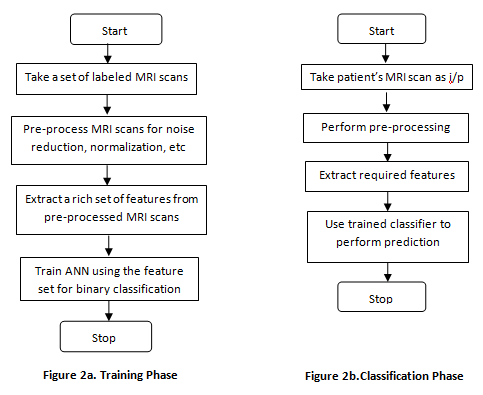Problem Statement
The objective of this work is to develop a system for detection of Alzheimer’s disease from MRI scan of a patient using machine learning approach.
The system will take MRI scan of a patient and will attempt to detect Alzheimer’s based on pre-determined set of features. It will mainly focus on physical characteristics such as texture, area and shape of the hippocampus region which is ill affected in the early stages of the Alzheimer’s.
The output of the system will be a binary classification label suggesting either positive or negative case of Alzheimer’s.
It is basically categorized under neural network matlab based project
Proposed Approach
The proposed approach can be divided into two phases: i) training phase and ii) classification phase
- Training phase: A set of labelled MRI scans is pre-processed for noise reduction, normalization, segmentation and ROI extraction. The training phase can be summarized as follows:
- Extract features such as texture, mean, skewness, variance, standard deviation, area, perimeter, etc. from the pre-processed MRI scans.
- Train an ANN classifier using this feature set.
The output of the training phase is a trained classifier capable of predicting binary classification label based on features of MRI scan.
The performance of the trained classifier can be evaluated using measures like accuracy, sensitivity and specificity.
- Classification: This phase can be summarized as follows:
- Take as input, MRI scan of a patient.
- Pre-process the MRI scan.
- Extract the required features from the patient’s MRI scan.
- Use the trained classifier to predict the classification label for the patient’s MRI scan.
The output of this phase is a binary classification label suggesting either positive or negative classification label for the patient’s MRI scan.
The metrics used to determine performance of the trained classifier can be used to determine performance of the proposed approach and its comparison with existing methods.
The flowchart in figure 2 depicts the working of the proposed approach.

